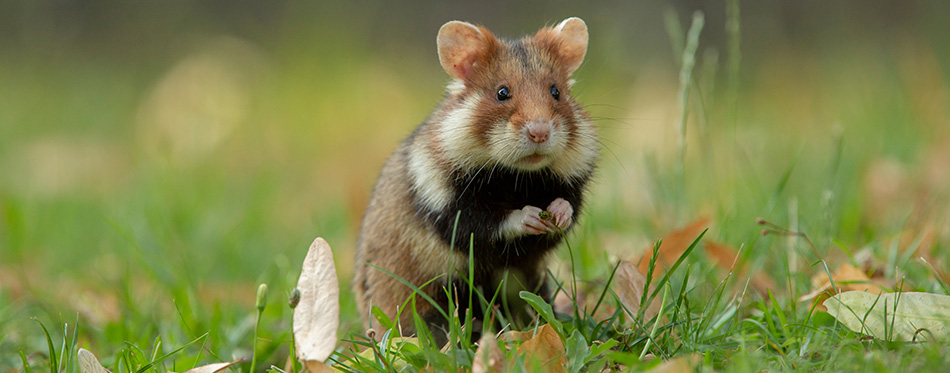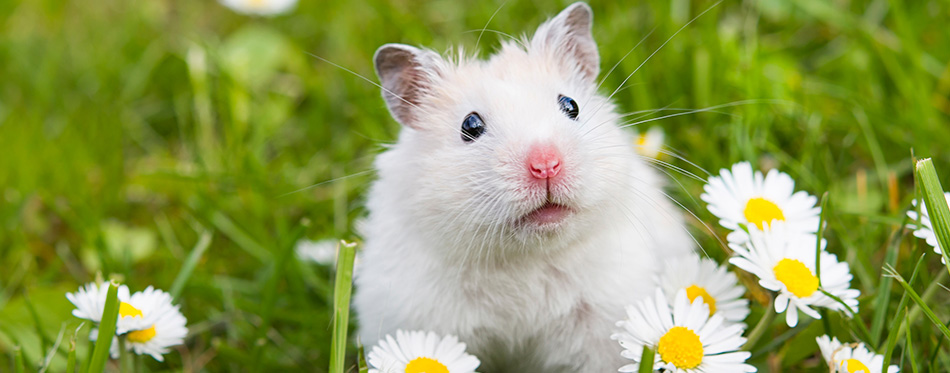Whether your pet hamster gave birth recently, or you’ve noticed that your hammy is plumper than the day you brought her home from the pet store, it is necessary to be equipped with the key information you need to look after her and her babies.
Many pet owners have commented that after their hamster has given birth, they have returned to the cage to find that the hamster ate a baby. So if your hamster is expecting then, as grizzly as it sounds, you may need to understand that there is the possibility that a mother hamster could eat their pups. Although, with the right care and attention there are plenty of ways you can prevent this from happening.

Reasons Why Hamsters Eat Babies
There are a few reasons behind why hamsters may consume their young including stress, living conditions, and even a lack of instinct. So it’s important to understand each reason and then apply the best method to protect your hamster’s litter.
An Important Note To Begin
First of all, one vital thing to know is that a mother hamster uses her cheeks to carry her babies. If you observe a hamster stuffing her young into her mouth, she isn’t necessarily looking for a snack but is simply temporarily storing her young so that she can put them somewhere safe.
Stress
Frequent exposure to loud and busy environments can cause a hamster to become stressed. If a momma hamster feels scared or threatened this can cause her to eat her babies as her instincts will tell her that this is the best alternative to external danger.
Hormones could also contribute to a hamster’s stress levels and in response, she could turn to eating her young as a way of protecting them as a result of feeling unsafe.
Overwhelming Litter Size
Sometimes a hamster may give birth to more babies than she can care for. A standard litter will be between 6 – 12 pups however, it is possible for a hamster to have up to 20. If a mother hamster feels overwhelmed and that she cannot provide for her entire litter she will eat some of the babies she perceives to be the least healthy.
Accidental Suffocation/Killing
Mother hamsters are likely to eat their babies if they accidentally kill them. This can occur if the baby hamster is smothered when feeding or deprived of oxygen for too long when in its mother’s cheeks. These occasions are unlikely but it’s important to know that it is a possibility.
Poor Living Conditions
If a hamster gives birth to a lot of offspring and has very little space in which to care for them, this can also lead to a mother hamster eating babies. Moreover, an unclean living environment is another factor that can cause a mother to do this. Hamsters are generally sanitary animals although there is only so much they can do to keep their home clean.
Lack of Motherly Instinct
Some first-time mothers will completely lack the instinct to care for and nurture their young and will feel stressed as a result. When a new hamster mom feels overwhelmed by her new babies she’ll turn to eating them as a way of eliminating the point of stress.
Sick Baby
Sometimes, if a mom senses that a baby isn’t healthy, she will either reject it or worse. By doing this the mother is protecting the remaining babies and herself from potential illness.
Poor Diet
Pregnant hamsters will need more food and protein in their diet to assist them in nurturing their young. You’d be surprised at how much food mothers can consume when expecting and rearing babies. So, unfortunately, if your hamster has inadequate sustenance, she may feel the need to eat one of her babies to provide herself with the energy she needs to nurse.
Change In Scent
Mother hamsters are extremely sensitive to smells and will reject babies that smell foreign to her and even resort to eating them. The scent of the hamster babies will adjust if they are picked up or handled by humans before they reach a certain age.
Other Cage Culprits
Other female hamsters, or even the father of the litter, can be responsible for the hamster cannibalism as they will eat the young ones to protect their territory.
How To Stop A Hamster From Eating Their Babies
The best way to protect baby hamsters is by helping the mother feel safe and comfortable. Fortunately, there are plenty of ways hamster owners can do this by using the tips below.
Environment
Making sure her habitat is clean, has enough nesting materials, and with plenty of space will put the mom at ease. In some cases, it may be worth getting your pet a bigger hamster cage before she is due her new litter. By doing this, she will have plenty of space to give birth to and care for all her babies.
External Factors
In addition to this, it’s also a good idea to move her cage to a quiet environment to reduce nervousness and provide her with some valuable alone time. Giving birth and rearing babies is taxing enough so removing external factors that will add to the anxiety will help the mom significantly.
Keep small children and other pets, especially cats, away from her cage. When children and other animals are acting excited, maybe taking photos of the pregnant hamster, or generally spending too much time around the cage, the mom can start to feel upset or threatened.
Plenty of Food and Fresh Water
Proving ample food and water will also prevent hamsters from eating their young. By doing this the mother will also be able to provide the litter plenty of nutrients as she rears them.
Do Not Touch The Hamster Babies
As cute as hamsters and their babies are it’s important that they are not handled. If a baby is picked up their scent will be comprised which could lead to their mother rejecting them or worse.
Remove All Other Hamsters
It is necessary to remove all other hamsters that share the same cage as the mother. Other hamsters are likely to start eating their babies to establish territory. Also, it is especially important to remove males from the cage including the father. A male hamster in the cage can make mothers fear for their offspring and can cause a lot of distress.

Final Thoughts
Hamsters eat their babies for a number of reasons and it can sometimes be difficult to identify a root cause but most of these can be easily prevented. If your hamster recently gave birth, and you’ve taken all of the crucial steps to ensure that they are happy and comfortable, then the last thing to do would be to monitor them closely. If you’re concerned, always seek advice!
To add, by understanding a hamster’s breed, traits, and individual needs, caring for a mother can be even simpler. A useful guide to hamster types can be found here for your knowledge.

